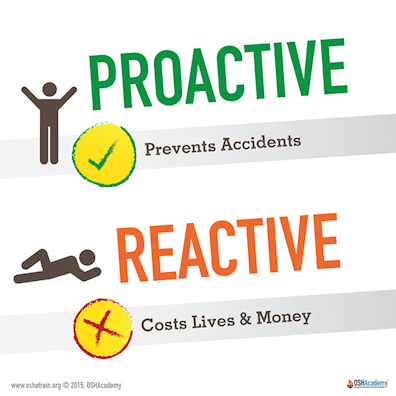The Real Solution: A Proactive Approach
Thankfully, many employers adopt a proactive approach to safety to prevent accidents. They do that by developing strategies that anticipate and correct hazards before they cause accidents.

Employers are committed to doing whatever it takes to prevent accidents. For them, safety is a core value 'chiseled in stone,' not just a shifting priority that can be lowered when challenges arise.
This approach is considered "proactive" because it assumes:
- there is no excuse for accidents;
- there are many preventive solutions; and
- in the long term, money and lives are always saved by preventing accidents
Proactive safety strategies tend to be more cost-effective than reactive ones because employers make investments in safety solutions that result in potentially huge returns.
- Incident/Accident analyses to determine root causes
- Safety inspections and observations
- Wellness programs
- Incentive/Recognition programs that rewards safe behavior
- Safety committees/teams
- Safety education and training
- Job Hazard Analyses (JHAs)
- Hazard communication programs
- Lockout/Tagout (LOTO) programs
- Confined space programs
Knowledge Check Choose the best answer for the question.
1-10. Which of the following approaches anticipates and corrects hazardous conditions and practices to prevent accidents?
You forgot to answer the question!
